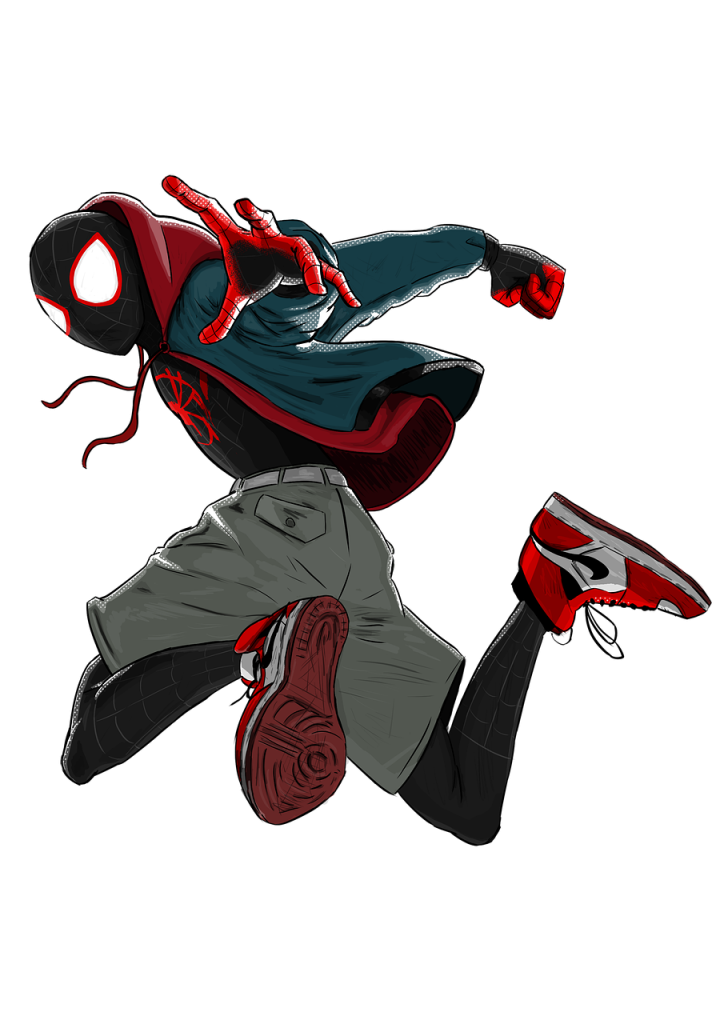Swinging back into action, Miles Morales returns in Spider-Man: Across the Spider-Verse, the highly anticipated sequel to the groundbreaking animated hit. This time, our Brooklyn hero isn’t just protecting his neighborhood – he’s catapulted across the vast multiverse, encountering a dazzling array of Spider-People from countless realities. Joining forces with the ever-awesome Gwen Stacy, Miles must team up with this new crew to confront a threat unlike any they’ve ever faced. But with great power comes great responsibility, and when the heroes clash over how to handle the crisis, Miles finds himself at odds with his new allies. Get ready for a mind-bending, action-packed adventure as Miles grapples with his own identity, the very fabric of reality, and what it truly means to be a hero. Packed with stunning visuals, a diverse cast of characters, and a story that will tug at your heartstrings, Spider-Man: Across the Spider-Verse promises to be an unforgettable cinematic experience. So, buckle up, web-heads, and prepare to be amazed!

“Spider-Man: Across the Spider-Verse” used a unique and visually stunning animation style that combines traditional 2D animation, 3D animation, and comic book visual elements. The film employed a technique called “comic book chromatic aberration” to mimic the appearance of offset printing and give the movie a distinct comic book feel. Additionally, the use of various frame rates, styles, and dynamic visuals contributed to the overall innovative and captivating visual effects. Visual Effects, also abbreviated as VFX, is the creating of video footage and images outside the situation of a live-action shoot. VFX is the integration of live footage of action and CG (computer-generated) elements. Thus, it is also associated with the technique of Computer Generated Imagery or CGI in abbreviated form. In other words, the benefits of using VFX can produce your own set and its ingredients through this process to give a visual treat to the audience. VFX is generally planned correctly in the pre-production period of making a film or a motion picture. It is performed in the production or the post-production period of the movie or the motion picture in the latter days. Well, in most cases, the VFX is done in the post-production period. The VFX supervisor is always there to look upon the desired visual effects that have to be inserted into the film as per the film’s script demand and the visual angle choices of the director. The VFX supervisor is the person who makes the flow of the work very smooth, whether it is the live-action shoot or the post-production work performed by the visual artists.
The animation of Spider-Man: Across the Spider-Verse is a marvel of visual effects, pushing the boundaries of what’s possible and creating a truly unique and immersive experience. Here’s a breakdown of the key VFX techniques used:
2D and 3D Fusion: The film’s signature look is achieved by seamlessly blending 2D hand-drawn animation with 3D computer graphics. This creates a dynamic and expressive style that pays homage to classic comic book art while still feeling fresh and modern.
Procedural Textures: The filmmakers developed a system called “procedural textures” to create the film’s detailed and textured look. This system allowed them to automatically generate complex patterns and textures, giving the animation a rich and painterly feel.
Dynamic Frame Rates: The film’s frame rate varies throughout, from traditional 24 frames per second to a much higher 60 frames per second. This creates a sense of fluidity and speed, especially during action sequences.
Multiverse Effects: The film’s multiverse setting is brought to life with a variety of VFX techniques, including particle simulations, fractal noise, and chromatic aberration. These effects create a sense of disorientation and wonder, immersing the viewer in the vastness of the Spider-Verse.
Character Design: The film’s characters are all uniquely designed, with each Spider-Man having their own distinct visual style. This attention to detail helps to bring the characters to life and make them feel real and relatable.

The success of the VFX in Spider-Man: Across the Spider-Verse lies not only in the technical prowess of the artists and animators, but also in their deep understanding and appreciation of the source material. The film’s animation pays homage to the classic comic book art style while simultaneously injecting it with fresh energy and innovation. As a result, Spider-Man: Across the Spider-Verse is not just a visually stunning film, but also a testament to the power of imagination and creativity. It is a film that will stay with you long after the credits roll, leaving you in awe of the possibilities that animation holds.
Written by- Shirsa Dasgupta | Edited by- Apurv Nayak

